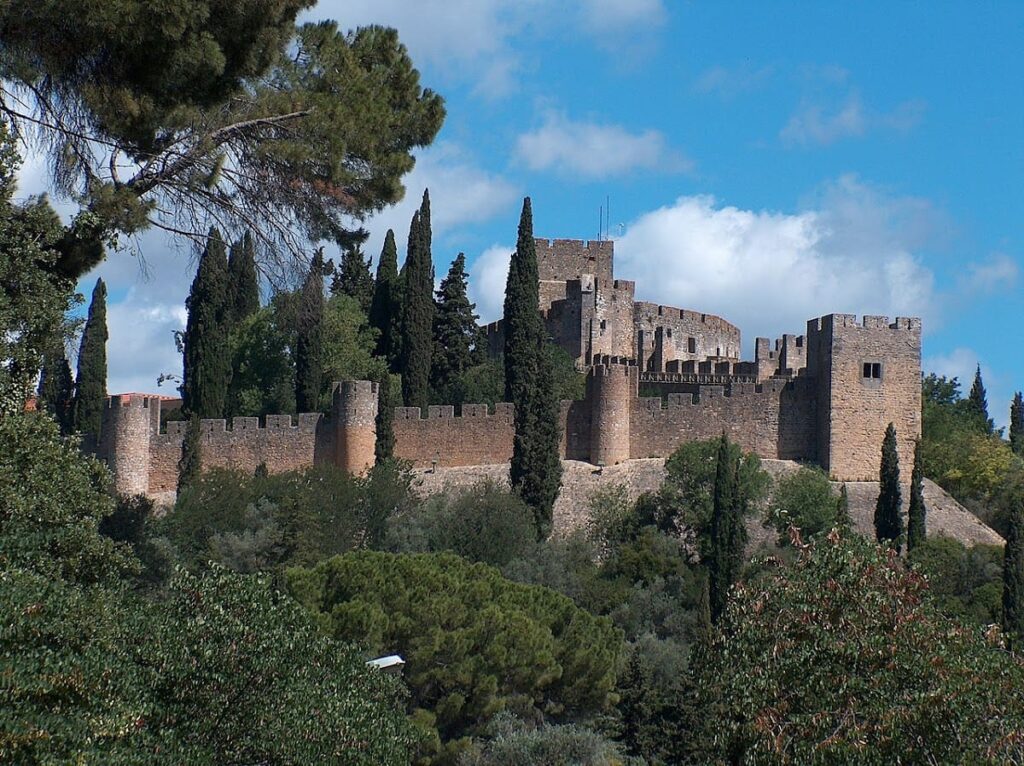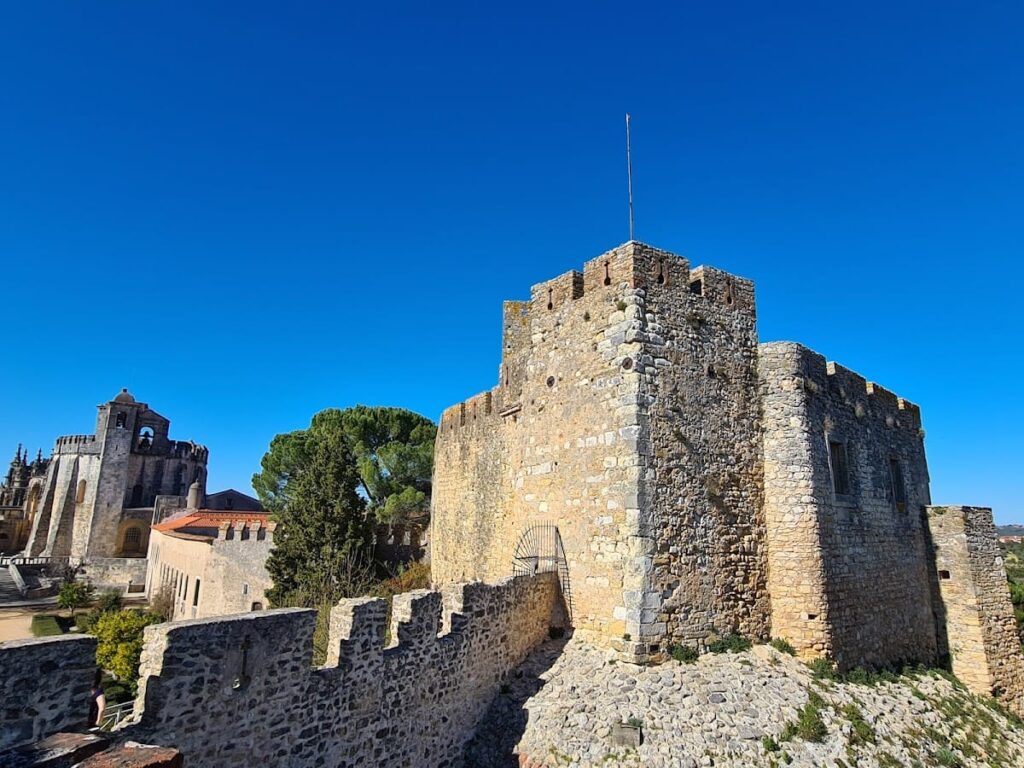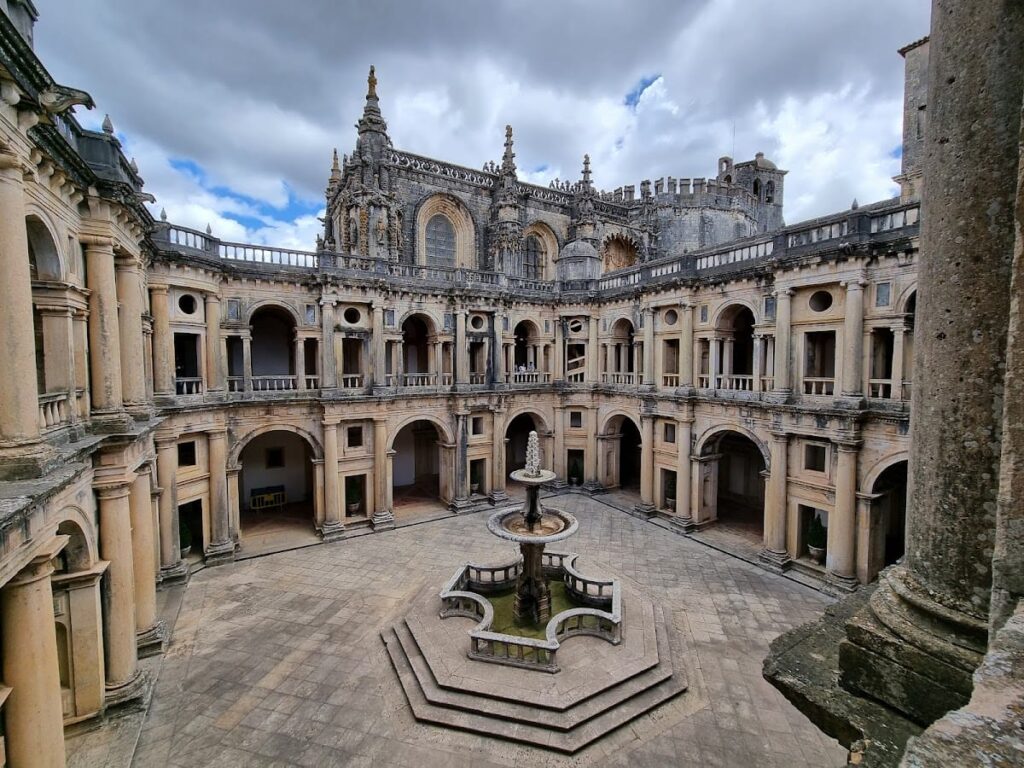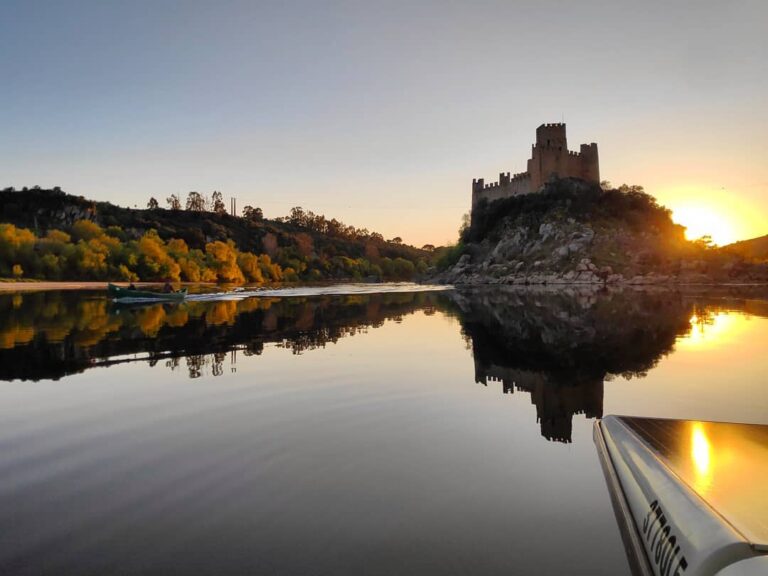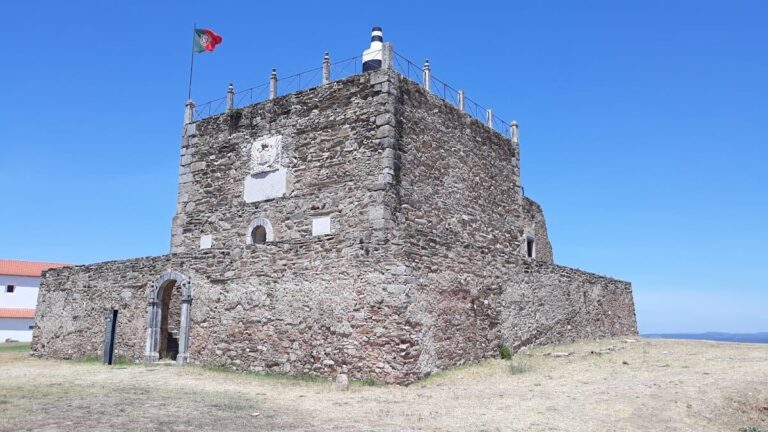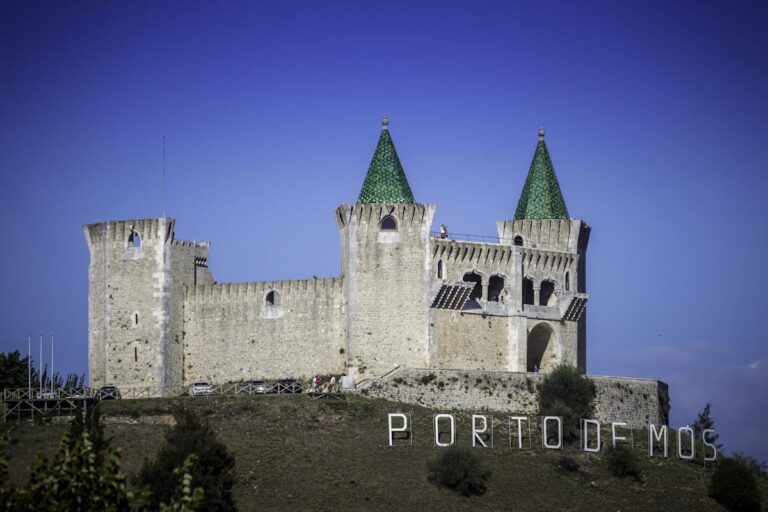Castle of Tomar: A Historic Templar Fortress in Portugal
Visitor Information
Google Rating: 4.7
Popularity: Medium
Google Maps: View on Google Maps
Official Website: www.conventocristo.gov.pt
Country: Portugal
Civilization: Medieval European
Remains: Military
History
The Castle of Tomar is located in the city of Tomar, within the Santarém district of Portugal. It was established by the Knights Templar, a medieval Christian military order, on the right bank of the Nabão River. Construction began on March 1, 1160, under the direction of Gualdim Pais, the Master of the Templar Order in Portugal. The castle was built to replace the ruined Castle of Cera and to serve as the new headquarters for the Templars in the country.
During the Reconquista, the castle formed part of the defensive “Linha do Tejo” or Line of the Tagus, a network of fortifications including Almourol, Idanha, Monsanto, Pombal, and Zêzere. In 1190, it withstood a six-day siege by Almohad forces. The southern gate was breached but was later recaptured by the defenders. This gate became known as the “Porta do Sangue,” or Gate of Blood, commemorating the fierce battle.
Following the suppression of the Templar Order by Pope Clement V in 1312, King Dinis of Portugal established the Order of Christ in 1321. This new order inherited the Templar properties, and by around 1338, its seat was moved to Tomar. The castle then became the residence of Prince Henry the Navigator, who served as Governor of the Order of Christ, linking the site to Portugal’s maritime expansion.
In the 16th century, the castle underwent restoration and expansion under Kings Manuel I and João III. These works included enlarging the adjacent Convent of Christ and relocating the population from inside the castle walls to the riverside town in 1499. Later, in 1618, the northwest tower was demolished to widen the castle’s entrance, reflecting changes in military and urban needs.
The castle was officially declared a National Monument in Portugal in 1910, with some sources citing 1918. It was later inscribed as a UNESCO World Heritage Site in 1983, together with the Convent of Christ. Throughout the 20th century, restoration and consolidation efforts took place, notably in 1973 and 1986, preserving the castle’s historical fabric.
Remains
The Castle of Tomar features a complex layout with a double line of defensive walls forming irregular polygonal shapes. The upper enclosure, or alcáçova (citadel), contains the keep tower and a cistern. The keep tower, known as the Torre de Menagem, is the oldest example of this type in Portugal and was introduced by the Templars. The lower wall surrounds the medieval fortified town and connects the east side of the Charola, a rotunda chapel, to the south of the alcáçova.
The walls are built with stone and include a sloped base called an alambor, designed to hinder siege towers and mining attacks. Semi-circular and quadrangular towers reinforce the walls at regular intervals. This tower design was influenced by fortifications from the East, such as those at Saphyum and the Hospitaller fortress in Hom.
Several gates provide access to the castle, including the main entrance Porta de Santiago, as well as the Porta do Sol, Porta do Sangue (Gate of Blood), and Porta de São Martinho. Inside, open courtyards lead to the Charola and the Torre de Dona Catarina. The walls continue with additional towers and bastions, including the Torre da Condessa.
The Torre de Menagem is rectangular and divided into three floors. A Latin inscription on its second floor commemorates the start of construction in 1160. This inscription is also displayed on a plaque near the stairway to the Charola courtyard.
Despite modifications, especially due to the expansion of the Convent of Christ on the west side, many Romanesque architectural elements remain well preserved. Decorative plaques with Visigothic or Mozarabic motifs, likely taken from the nearby site of Santa Maria dos Olivais, are embedded in the walls, suggesting earlier Roman and Islamic military influences. The castle is regarded as one of the most authentic medieval fortresses in Portugal.
